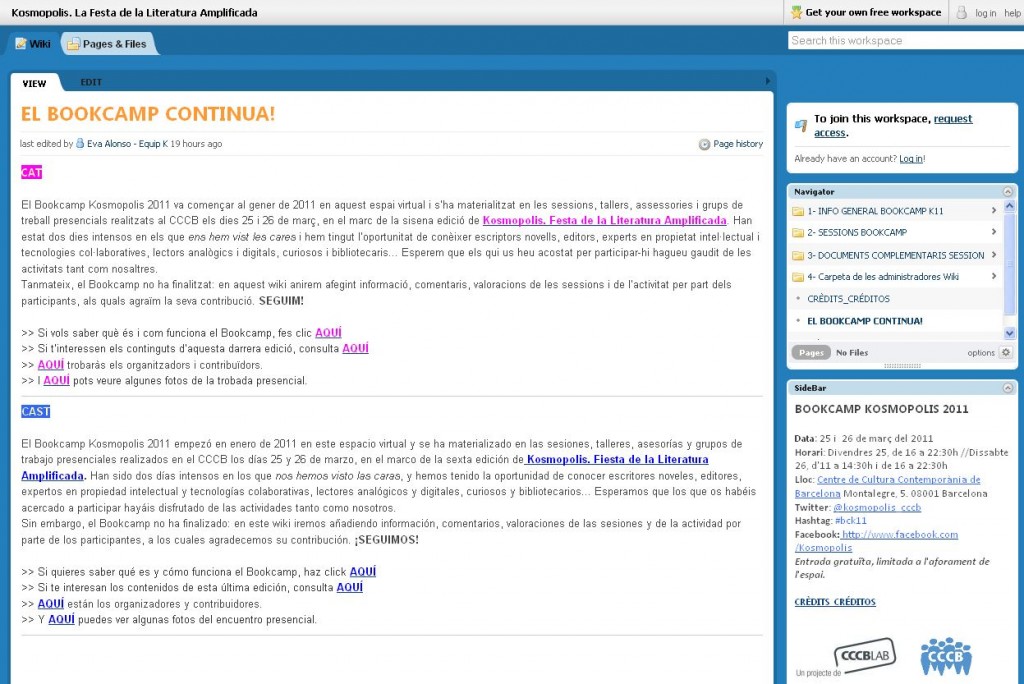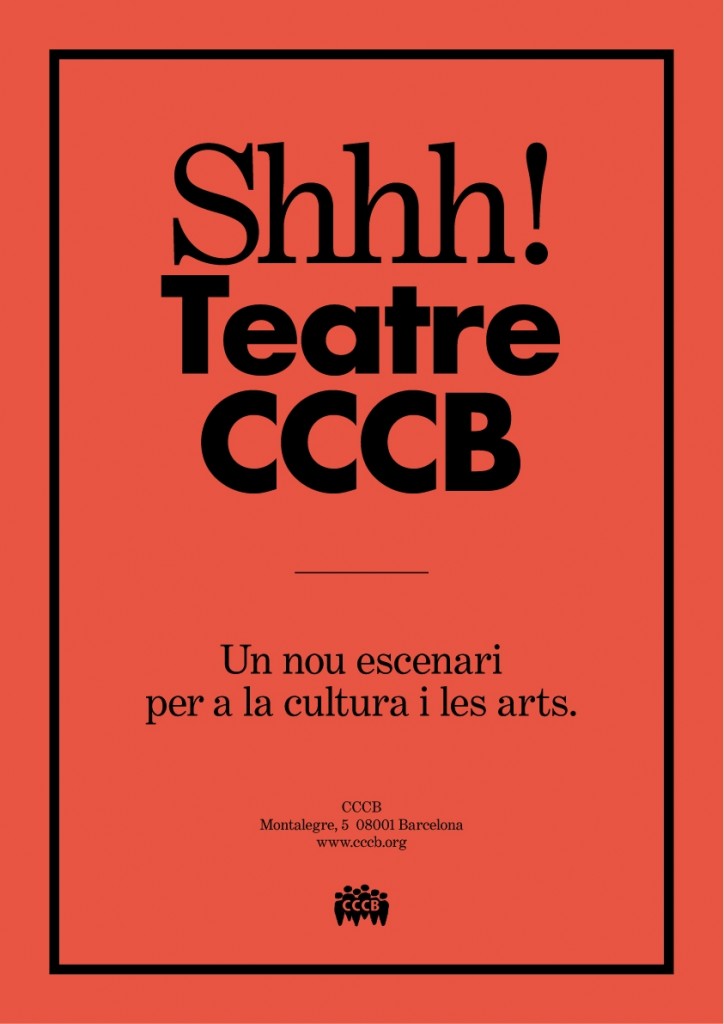 The CCCB Lab blog, the Kosmopolis Bookcamp collaborative platform and the interactive City of Horrors web-mural from the exhibition “Barcelona-Valencia-Palma” are the CCCB’s three candidates for the «Best of the Web» prizes. These prizes are awarded every year at the Museums and the Web conference, one of the principal international meeting points for everyone involved in developing and managing cultural and museum websites.
The CCCB Lab blog, the Kosmopolis Bookcamp collaborative platform and the interactive City of Horrors web-mural from the exhibition “Barcelona-Valencia-Palma” are the CCCB’s three candidates for the «Best of the Web» prizes. These prizes are awarded every year at the Museums and the Web conference, one of the principal international meeting points for everyone involved in developing and managing cultural and museum websites.
A jury made up of specialists from around the world will be selecting the best museum projects in areas such as education, audiovisuals and exhibitions (see prize categories).
All members registered in the Museums and the Web platform can vote for their favourite project from this year’s 109 candidates, between 25 March and 7 April. The CCCB is taking part in Exhibition with “The City of Horrors”, Social Media with Kosmopolis Bookcamp, and Museum Professional with the CCCB Lab blog.
The results of voting will be announced during the conference, which will be taking place from 6 to 9 April in Philadelphia (USA). Museums and the Web is one of the foremost meeting points for the culture sector because it deals with the principal trends for the future of museums.
In 2009, Barcelona’s Picasso Museum received the Best of the Web Social Media Prize for its strategy and use of 2.0 tools, and the MACBA was awarded the prize to the best podcast for Radio Web MACBA.
 The city of horrors web-mural
The city of horrors web-mural
 CCCB Lab blog
CCCB Lab blog
Wiki Bookcamp Kosmopolis
The CCCB Lab blog, the Kosmopolis Bookcamp collaborative platform and the interactive City of Horrors web-mural from the exhibition “Barcelona-Valencia-Palma” are the CCCB’s three candidates for the Best of the Web prizes. These prizes are awarded every year at the Museums and the Web conference, one of the principal international meeting points for everyone involved in developing and managing cultural and museum websites.
A jury made up of specialists from around the world will be selecting the best museum projects in areas such as education, audiovisuals and exhibitions (see prize categories).
All members registered in the Museums and the Web platform can vote for their favourite project from
The CCCB Lab blog, the Kosmopolis Bookcamp collaborative platform and the interactive City of Horrors web-mural from the exhibition “Barcelona-Valencia-Palma” are the CCCB’s three candidates for the Best of the Web prizes. These prizes are awarded every year at the Museums and the Web conference, one of the principal international meeting points for everyone involved in developing and managing cultural and museum websites.
A jury made up of specialists from around the world will be selecting the best museum projects in areas such as education, audiovisuals and exhibitions (see prize categories).
All members registered in the Museums and the Web platform can vote for their favourite project from this year’s 109 candidates, between 25 March and 7 April. The CCCB is taking part in Exhibitions with “The City of Horrors”, Social Media with Kosmopolis Bookcamp, and Museum Professional with the CCCB Lab blog.
The results of voting will be announced during the conference, which will be taking place from 6 to 9 April in Philadelphia (USA). Museums and the Web is one of the foremost meeting points for the culture sector because it deals with the principal trends for the future of museums.
In 2009, Barcelona’s Picasso Museum received the Best of the Web Social Media Prize for its strategy and use of 2.0 tools, and the MACBA was awarded the prize to the best podcast for Ràdio Web Macba.
this year’s 109 candidates, between 25 March and 7 April. The CCCB is taking part in Exhibitions with “The City of Horrors”, Social Media with Kosmopolis Bookcamp, and Museum Professional with the CCCB Lab blog.
The results of voting will be announced during the conference, which will be taking place from 6 to 9 April in Philadelphia (USA). Museums and the Web is one of the foremost meeting points for the culture sector because it deals with the principal trends for the future of museums.
In 2009, Barcelona’s Picasso Museum received the Best of the Web Social Media Prize for its strategy and use of 2.0 tools, and the MACBA was awarded the prize to the best podcast for Ràdio Web Macba.











